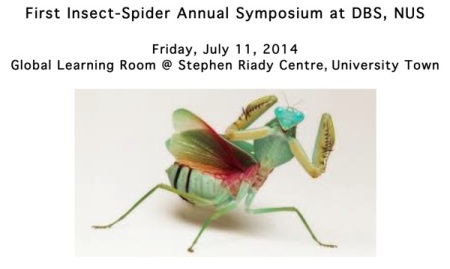Department of Biological Sciences, NUS
Qualifying Examination
“Unintended Feedbacks: Implications and Applications for Conservation”
Cecilia Larrosa
Graduate Student,
Ecological Modelling And Economics Lab
Department of Biological Sciences
National University of Singapore
Supervisor: Asst Prof L Roman Carrasco
Wed 13 Aug 2014: 10am
At the DBS Conference Room II (S1, Level 3, mezzanine)
All are welcome
Abstract: – Unintended effects of planned conservation interventions can feedback to produce undermined and even perverse outcomes. The unintended feedbacks of conservation interventions, modulated through human decision-making, are poorly studied but have wide implications for project design, evaluation of conservation success and outcome prediction.
Drawing on examples from conservation science, I present a conceptual framework and a typology of unintended feedbacks based on a social-ecological systems (SES) approach, and analyse implications for conservation. The moment a conservation intervention is implemented it becomes part of the system, and feedbacks develop as part of the SES. Three types of causal mechanisms for unintended feedbacks can be distinguished: (1) Flow unintended feedbacks are due to the enhancement or dampening of pre-existing feedback loops within the SES; (2) Deletion unintended feedbacks occur when pre-existing feedback loops within the SES are lost; and (3) Addition unintended feedbacks occur when interventions add actors or links to the SES structure.
For future work, I present three proposals; firstly, to analyse the effect of a much debated deforestation reduction policy –land sparing– accounting for market feedback effects. This will be applied to the case study of oil palm intensification in Indonesia. Additionally, I propose to examine the effect of including market feedback effects into spatial conservation planning for payment for ecosystem services in the Atlantic forest of Brazil. Finally, I propose to investigate the impact of accounting for land market feedbacks in predictions of ecosystem service provision by a widely used policy support tool.
Considering unintended feedbacks can improve our understanding of responses to, success, and outcomes of conservation interventions. The presented work is a first step towards it, promoting discussion of unintended feedbacks, and the proposed work will examine the role these unintended feedbacks play in conservation practice.”





